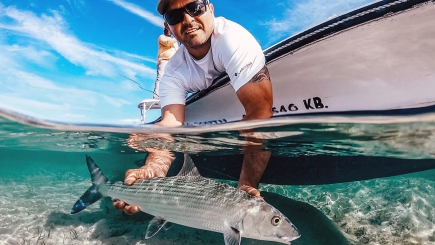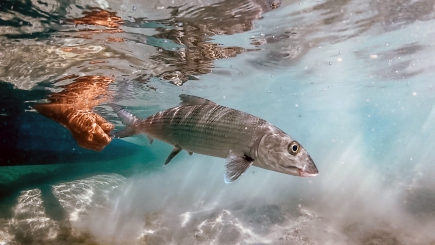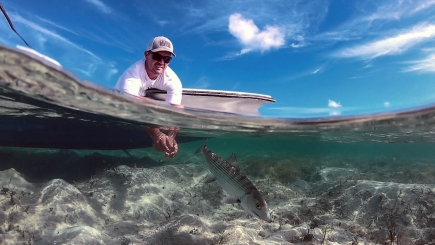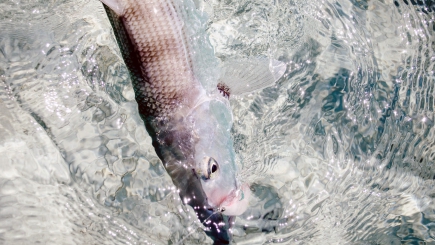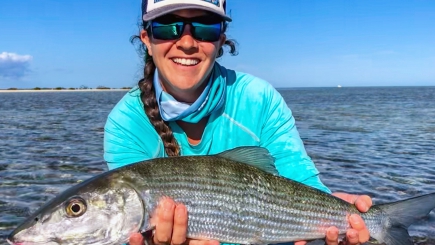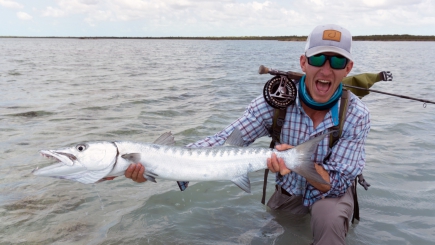The fishery on South Andros Island is huge, varied and extremely productive. We fish 4 parts of the island –
- East side – tidal creeks and miles of oceanside hard bottom flats flowing into the “tongue of the ocean.”
- Inland – a myriad of ponds and creeks in the interior of the island, where you can wade fish or fish from the boat.
- South side – a series of small keys off the southern tip of the island with expansive white sand flats.
- West Side – the remote frontier, soft-bottomed (muddy) flats where you’ll mostly fish from the boat.
Some areas hold large groups of fish while others are home to large fish cruising in singles and pairs; novice or expert anglers alike have a great time on the flats of South Andros. We have lots of opportunities for both wading and poling, depending on your preferences and conditions.
About Bonefish
South Andros Island is widely known as the ‘Bonefishing Capital of the World’. With the island’s endless, diverse flats, the opportunities are boundless. You want to fish to giant schools of hungry bonefish? No problem. Have your sights set on casting to large tailing bones? We can make it happen for you.
When it comes to bonefish, no amount of preparation, equipment or planning can replace the natural bounty of unexploited flats South Andros Island has to offer.
Expect to fish to schools of bonefish that average 2 to 4 pounds, with larger fish often swimming with the school. You will also have many shots at tailing and cruising bonefish ranging from 5 to 10 pounds plus. These opportunities will come while wading hard sand and marl flats or being poled along in one of our fully equipped flats skiffs. We’re not big on keeping score, but expect some days where you lose count of the number of bones you hook and land.
Most of your encounters with bonefish will be on extensive shallow flats or winding mangrove creeks in 1 to 2 feet of water. The fish will often be moving quickly on the tide and grubbing as they go looking for shrimp, crabs, worms, shellfish, baitfish and small invertebrates. A bonefish’s mouth, unlike that of most other gamefish, is located underneath the head, enabling the fish to easily root around the bottom for food. While you will often see (and cast to) larger schools of relatively easy-to-catch fish, the bruisers will often be traveling in singles or pairs and they offer some of our more challenging fishing.
Since bonefishing is often viewed as a combination of fishing and hunting, it is important that you stay alert and watchful for inbound fish. Your guide will put you on the ‘clock’ system to guide your shots at the fish – meaning that if he says look to 1 o’clock at forty feet, that’s where your cast needs to be, pronto!
If at all possible, attempt to spot the fish prior to laying down your cast. You will need to lead the fish a bit as bonefish can easily spook if you ‘line’ them or plunk a fly right on their heads. Bonefish can be nervous critters (as everything considers them a delightful meal) and learning to spot the fish, even with your guide’s assistance, will greatly enhance your success rate in hooking up.

